
Starting June 1st, 2023 Our warehouse fee will be $0.65/cubic foot per month
In effort to lower the warehouse storage fee during inflation, we have went narrow aisle racking.This construction took us four months but the project is finally completed. With narrow aisle racking, we are able to drop storage by 24%.We as partners will go through this inflation together.
02/16/2023
When you work with experts on one of the most important facets of your business, such as a 3PL (third-party logistics service), you can concentrate on marketing, business expansion, and client happiness. A 3PL is highly sought after by eCommerce brands because the business model of consumer products companies handling most or all operations internally isn't necessarily the most productive, especially when it comes to eCommerce fulfillment. While growing on a tight budget, many eCommerce businesses discover that a 3PL can help them save time and money.
A 3PL provider may choose, pack, and ship your products for you as well as store your inventory. They can also act as a crucial link between your production processes and your final consumers. Your consumers are satisfied and your business expands when your order fulfillment processes go smoothly. Excellent fulfillment is crucial for eCommerce businesses to succeed, and this is not an exaggeration.
It's imperative to comprehend a third-party logistics provider (3PL) before dealing with one. In this article, we go into detail on how to identify the best third-party logistics partner and how to incorporate 3PL into your operations. To discover if the 3PL services offered by WorldCraft Logistics are appropriate for your brand, this is a great place to start.
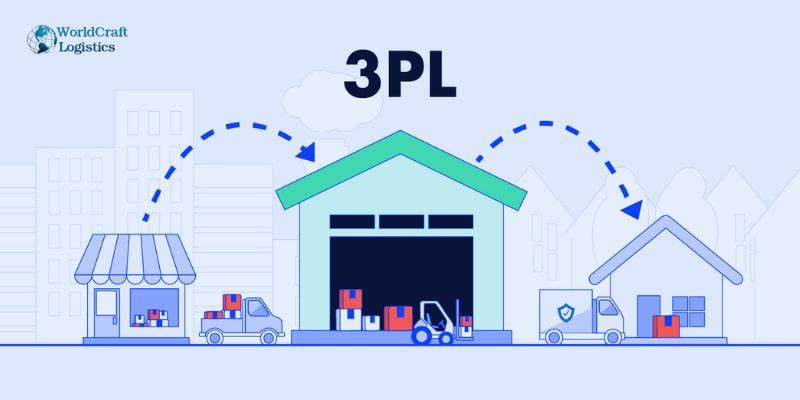
A third-party logistics (3PL) provider specializes in providing outsourced logistics services, covering the management of various aspects of procurement and fulfillment activities. In the business context, the term 3PL is broadly applicable to any service agreement related to the storage or shipping of goods.
These services offered by a 3PL provider may range from individual offerings, such as transportation or warehouse storage and comprehensive packages that encompass the entire spectrum of supply chain management. Most frequently, these services consist of:
✔️Warehousing
✔️Managing inventory
✔️Selecting and assembling
✔️Shipment and receipt.
✔️Some 3PL companies also offer the following additional services:
✔️LTL and FTL freight shipping
✔️Transporting goods
✔️Kitting
✔️Returns, or reverse logistics.
✔️To relieve you of managing logistics operations, a third-party logistics company offers eCommerce fulfillment services.
The sorts of fulfillment and warehousing that each 3PL services firm specializes in vary. Some have warehouses that can store and ship food products that need to be refrigerated and are prepared for cold fulfillment. In addition to storing and shipping hazardous chemicals, clothing, product lines with a high SKU count or a low SKU count, etc., other 3PL providers are also equipped to do so. One of the best third-party logistics suppliers for large, heavy, and expensive goods is WorldCraft Logistics.
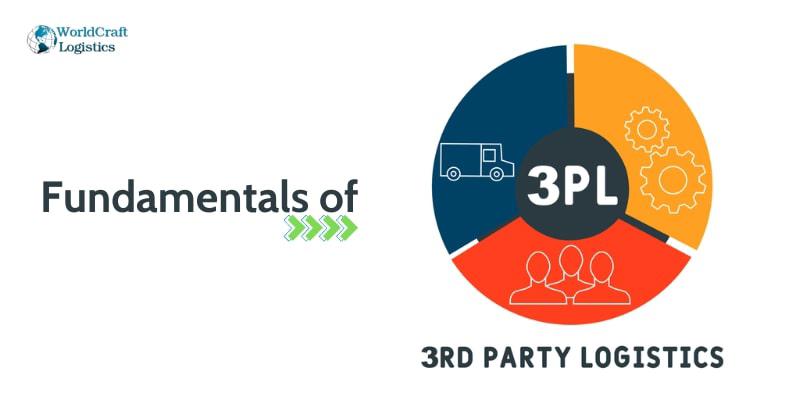
Warehousing, inbound and outbound shipping are all handled by third-party logistics companies for their customers. Most 3PL businesses own or rent the warehouse space where they keep goods for their customers, pick orders, and send packages. The majority of 3PLs don't have a fleet of delivery trucks, but some (most notably Amazon) offer last-mile transportation services as part of their end-to-end logistics services.
You're outsourcing your order fulfillment, which is referred to as third-party. The staff is not employed by you, and you are not in charge of running the business. Instead, you lease space in a huge warehouse that houses goods for numerous businesses to store your merchandise. Your products are received by warehouse staff, who then inventory them. In order to fulfill requests, they choose things from shelves and pack them safely for transportation. For order delivery to your clients, the 3PL works with a number of carriers.
Designed to maximize efficiency and speed, third-party logistics warehouses. Your 3PL can manage the increased demand as your company expands, and you may increase your capacity without adding more workers. With your cooperation, a 3PL can find ways to reduce transportation costs and speed up delivery. You gain from the knowledge and attention of supply chain specialists when you hire a 3PL provider to handle your eCommerce fulfillment.
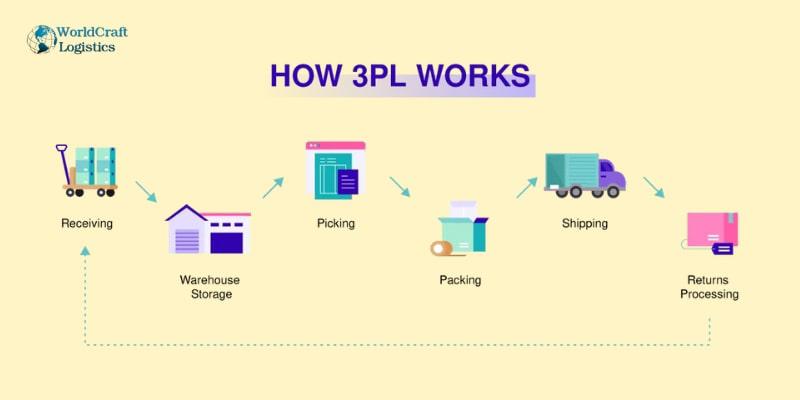
When you outsource your fulfillment, your products are shipped directly from the factory to the third-party logistics facility. In addition to basic fulfillment, the fulfillment business can offer a number of value-added services once your product has arrived. The most significant components of the 3PL method are listed below.
Multichannel selling is crucial to the survival of the majority of eCommerce firms. Your fulfillment facility need a robust IT system to support this. Warehouse management systems (WMS) used by fulfillment centers feature an easy-to-use integration with many eCommerce platforms. To connect directly to your shopping cart, your provider should be able to either support all of your sales channels or provide a unique API. You should also be able to access a dashboard to check and follow the status of your orders online in real time.
In order to reduce your freight costs, full-truckload (FTL) and less-than-truckload (LTL) freight might be quite useful. This is particularly true if you frequently send out large orders to business clients or wholesale orders to retailers. Additionally, you can use freight services to transport your goods to a distribution center located nearer to your target market or between warehouses.
A bed in a box or a bicycle can be delivered to your end client using residential LTL freight, which is a great alternative if the item is large. LTL freight creates new opportunities for delivering bulky goods by securing the goods with pallets during transit.
Some outside logistics providers are able to help you with this procedure by setting up FTL or LTL loads and handling inbound truckload freight. You may improve your freight transportation by using your 3PL to get the greatest offers and the appropriate quality of service.
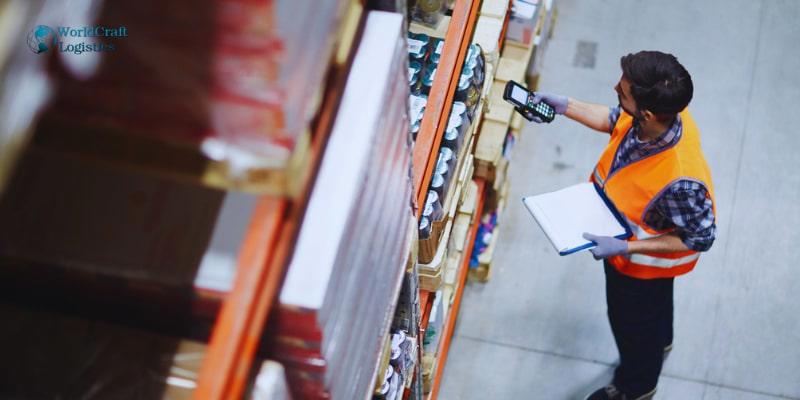
As a result of your logistics partner's extensive knowledge of inventory management, working with a third-party logistics firm frees you from having to handle logistics alone. Your account representative can assist you with stock management by using the knowledge gained from working with numerous eCommerce businesses. Ask for guidance on supply chain management, replenishment levels, and the best seasonal inventory levels.
Order fulfillment revolves around pick, pack, and ship services. A customer's order is sent immediately to your fulfillment facility when they place it through one of your sales channels. The items for the order are located on the shelves there by a picker. An order is then packaged by a packer using the ideal box, which is the ideal size. Adding the shipping label is done by the packer. As soon as the order is prepared, the shipper makes sure it is picked up by the appropriate carrier.
One type of same-day delivery offered by some third-party logistics companies is the picking, packing, and sending of your customers' purchases the same day they are received. Orders are delivered to clients more quickly with same-day shipping, and happier customers as a result.
Two levels of same-day shipment, for instance, are offered by WorldCraft Logistics. The other will ship orders that come in as late as 5:00 pm on the same day, while the first has a 3:00 pm deadline.
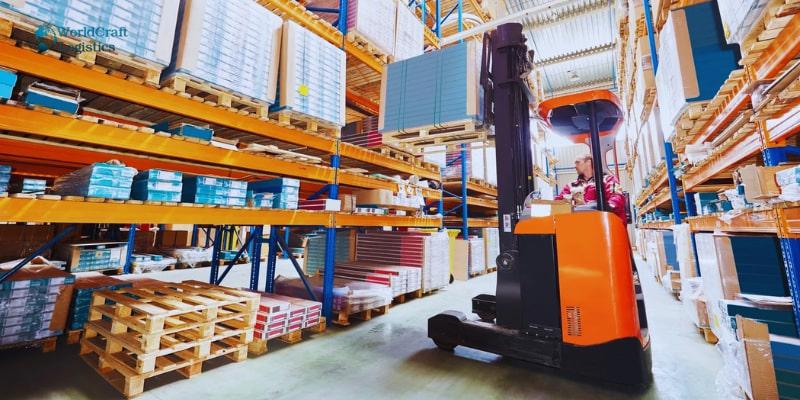
A crucial step in your fulfillment process is reverse logistics, sometimes known as returns. Clothing and shoes, for example, have substantially higher return rates than the industry average for products that are sized. To help you with this crucial supply chain task, several eCommerce fulfillment centers will accept and handle returns.
To determine whether returned goods are damaged or fit for stock return, one step in the reverse logistics process involves inspecting the returned goods. The time it takes to make undamaged goods once again accessible for purchase can be slashed with effective reverse logistics.
Your return rate is impacted by a number of variables, such as the kind of products you offer, but your 3PL's core capabilities can also have a significant impact. eCommerce businesses benefit from service providers who have low fulfillment mistake rates.
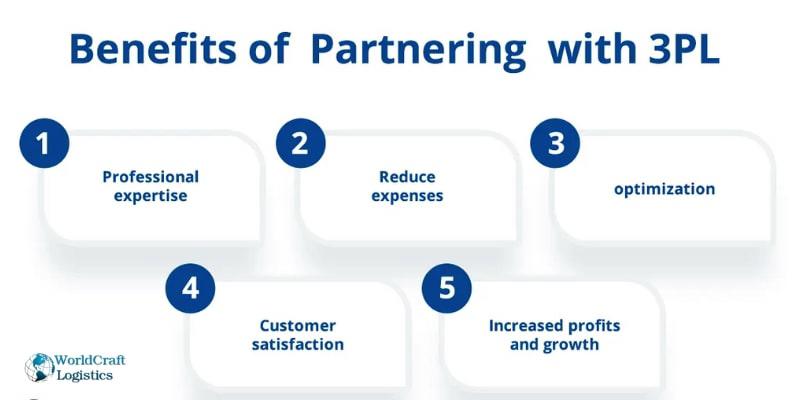
eCommerce firms can expand and prosper with the aid of outsourcing their fulfillment needs. Using a third-party logistics supplier has a number of advantages for your company, including the following:
No warehouse space is necessary for your company to lease. You can more quickly expand and save money on storage when employing third-party logistics because you have more control over how much warehouse space your products occupy.
For the orders of your customers, experts offer excellent fulfillment.
Due to the flexibility of your warehouse locations, you can locate your products closer to your clients. Reduced shipping costs and quicker delivery result from this.
Your 3PL partner may be able to minimize your shipping costs because fulfillment warehouses are frequent shippers and often receive discounted rates from major carriers.
Access to value-added services like kitting, package consolidation, and freight transportation is given to you.
An experienced companion is gained. You may choose the finest inventory management, shipping, packaging, and reverse logistics choices for your business with the aid of your third-party logistics supplier.
By focusing on marketing and boosting sales, you free yourself and your team to concentrate on your company's key skills. You can CONTACT NOW with a partner to optimize the shipping process and manage your shipments effectively - Worldcraft Logistics company.
Finding the proper fit is the next step if you've chosen to collaborate with a third-party logistics provider. There are variations among fulfillment companies. It's possible that your organization won't benefit from using even a great 3PL.
A 3PL provider that can seamlessly interface with your eCommerce platforms and has expertise shipping goods that are identical to yours would be the ideal fit for your organization.
In your quest for the best provider of eCommerce fulfillment services, keep the following points in minds:
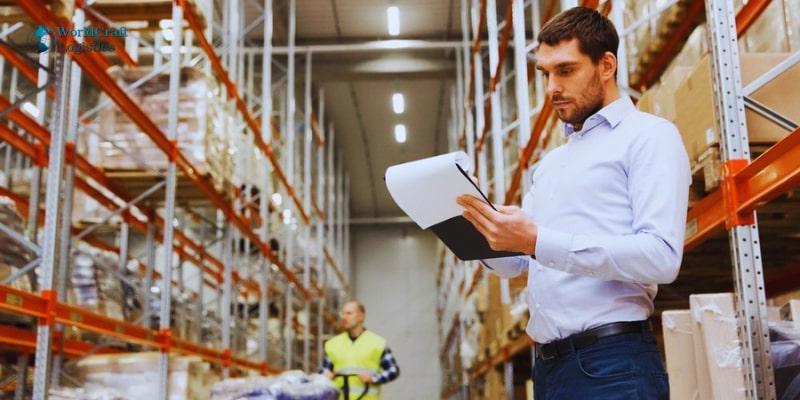
When evaluating your current 3PL needs, it is essential to take into account the specific regions where you require services. Additionally, an assessment of existing service-level agreements (SLAs) is necessary to establish delivery timelines.
For instance, commitments to deliver mission-critical replacement parts within a specified timeframe, whether it be two or 24 hours, will influence the choice of a 3PL provider. Their warehouse locations must be strategically situated to meet your delivery commitments.
As highlighted earlier, the aspirations for regional expansion and global reach are pivotal for OEMs. However, if your current 3PL provider cannot cater to the extended regions, a decision must be made to either transition to another 3PL service logistics partner or introduce an additional vendor. Unfortunately, a multi-vendor approach may lead to communication issues, inventory management discrepancies, and overall inefficiencies. Establishing a long-term growth and expansion plan enables informed decisions when selecting a 3PL provider, ensuring they possess not only a substantial global presence but also regional expertise for successful expansion.
Evaluating 3PL providers requires thorough investigation and comprehension. Diligence is necessary to identify all the capabilities of a 3PL and assess how well they align with your current and future needs.
This involves examining capabilities such as IOR (Importer of Record) and EOR (Exporter of Record), the overall global footprint of the solution provider, inventory management technology, and other relevant factors.
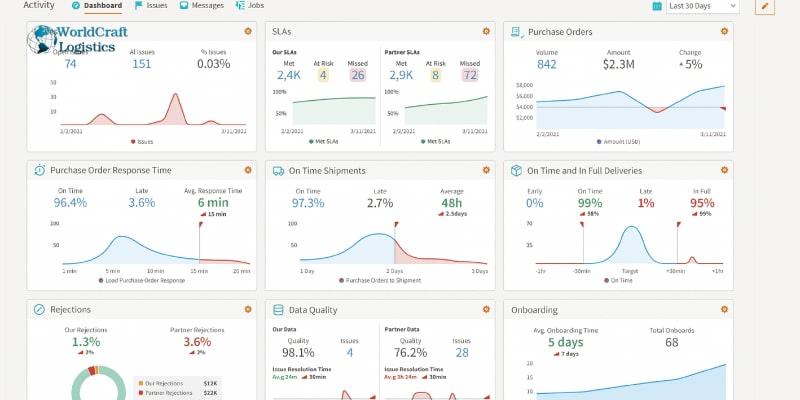
The partnership with your 3PL solution provider has direct implications for your existing and future client relationships, brand reputation, and overall customer satisfaction. To ensure that your components reach their destinations on time, it is crucial to inquire about the 3PL’s SLA achievement percentage with their current clients during the vetting process. This statistic serves as a reliable indicator of their ability to meet commitments.
A proficient 3PL logistics provider should offer insights into their onboarding process and present a projected timetable from initiation to completion. Assigning a dedicated account manager to collaborate closely with you in transitioning your post-sales service supply chain is also essential. Establishing open lines of communication and proactively addressing concerns contribute to a smooth onboarding process.
Scope:
Ownership:
Integration:
Responsibility:
In summary, while 3PL providers are more focused on specific logistics functions, 4PL providers take on a higher-level role, overseeing and optimizing the entire supply chain by coordinating multiple 3PL providers. The choice between 3PL and 4PL depends on the complexity of the supply chain and the level of strategic control a company desires.

Logistics and transportation are crucial for the supply chain. Third-party logistics providers (3PLs) assist businesses in optimizing logistics, reducing costs, and managing the movement and storage of goods. Typically non-asset based, they offer expertise, technology, and industry connections.
3PLs negotiate favorable rates by working with multiple shippers, reducing overhead costs in various departments. They help scale businesses without additional hiring, streamline processes, and employ advanced technology, eliminating the need for a separate transportation management system (TMS).

3PLs can hold certifications for specialized services, such as food storage or hazardous materials transportation. The Certified Transportation Broker (CTB) program from the Transportation Intermediary Association (TIA) is widely recognized, covering key competencies for employees.
Before choosing a logistics partner, businesses should identify needs and set goals. Successful partnerships are built on trust and shared values. The implementation strategy should cover technology integration, employee training, data analytics, reporting, escalations, scheduled communications, and ongoing reviews.
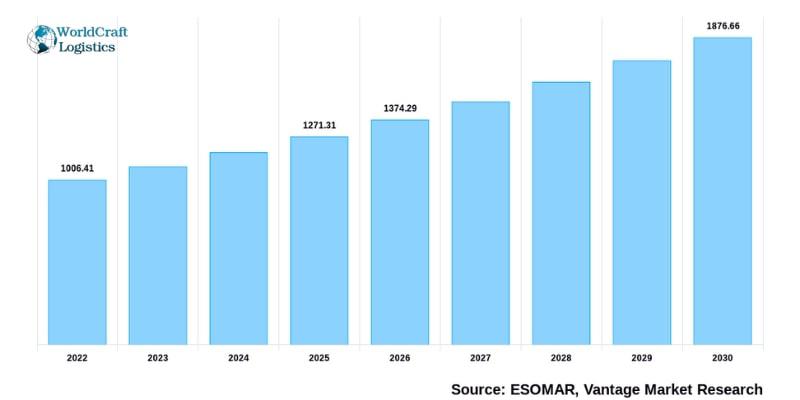
As an integral part of the supply chain, the logistics industry offers a multitude of services facilitating economic coordination among firms. In 2021, the global logistics market reached a value of 1006.41 million U.S. dollars (according to Esomar) and is projected to surpass 1876.66 million U.S. dollars by 2030.

Education
01/05/2025

Education
02/18/2025

Education
01/01/2024

Education
08/28/2024

Education
11/13/2023